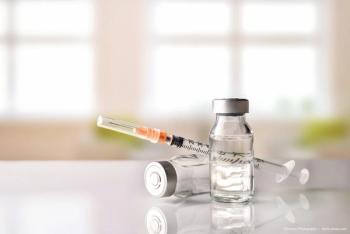
Immunomodulatory therapy for corneoscleral disease requires careful monitoring
Immunomodulatory therapy for ocular inflammatory disease can be potent and effective, but physicians should be patient while awaiting results-and watch carefully for complications.
Take home-message: Immunomodulatory therapy for ocular inflammatory disease can be potent and effective, but physicians should be patient while awaiting results-and watch carefully for complications.
By Vanessa Caceres; Reviewed by Ramana S. Moorthy, MD
Indianapolis-Immunomodulatory treatment for ocular inflammatory disease requires constant vigilance and may take many months to be effective, said Ramana S. Moorthy, MD.
Some of the diseases that may require immunosuppressive agents include necrotizing scleritis, Mooren’s ulcer, limbal cell transplantation, peripheral ulcerative keratitis (PUK), ocular cicatricial pemphigoid, and high-risk corneal transplantation.
“All of these require early systemic immunomodulatory therapy,” said Dr. Moorthy, founding partner, Associated Vitreoretinal and Uveitis Consultants, and clinical associate professor of ophthalmology, Indiana University School of Medicine, Indianapolis.
For their effective use, physicians must first rule out the possibility of infection, get acute inflammation under control rapidly usually with corticosteroids, and then control chronic inflammation to prevent complications of chronic ocular inflammatory disease and the rejection of organ transplants, Dr. Moorthy said.
What is still unclear is the appropriate duration of therapy and when durable remission is achieved so the patient can stop therapy, he said.
For milder disease, physicians will start with treatments, such as sulfones, but then move on to corticosteroids for an active disease process, Dr. Moorthy said.
“When corticosteroids do not work due to failure to achieve inflammatory control at reasonable maintenance doses or because they are not tolerated, we switch to anti-metabolites, calcineurin inhibitors, and, in the cases of severe disease such as PUK, alkylating agents,” Dr. Moorthy said.
It is common to combine these agents for additive immunosuppressive effect at lower doses, he added.
Much of the data regarding the use of these agents is available in the Systemic Immunosuppressive Therapy for Eye Diseases (SITE) studies conducted over the past decade, Dr. Moorthy said.
Overview of common therapies
Methotrexate is an antimetabolite commonly used for corneoscleral disease, Dr. Moorthy said. Patients can self-administer it subcutaneously, which improves bioavailability.
“Given weekly, at 15 to 25 mg per week, we know the SITE studies have shown a significant reduction in inflammation and reduction of the need for corticosteroids,” he said.
The agent is often used in children as it is well tolerated with no long-term risk of secondary neoplasia. With the long-term use of methotrexate, patients often use folic acid supplementation, and practitioners recommend alcohol abstinence, avoidance of other medications that affect the liver, and the use of more than one method of contraception.
Azathioprine is another commonly used agent. However, patients with inherited thiopurine methyl transferase deficiency will need to avoid this drug or use it at a lower dose, Dr. Moorthy explained. The typical dosage is 1 to 3 mg/kg mg daily; the SITE studies show a robust reduction in inflammation. Some complications include nausea, headache, leukopenia, and elevation of liver enzymes.
Mycophenalate mofetil is a favored antimetabolite as it is effective rapidly and has a reasonable side effect profile.
“Within 2 months, we’ll often see penetration in the ocular tissues and reduction in inflammation,” Dr. Moorthy said.
Although gastrointestinal problems are a common side effect, physicians can reduce the dose if necessary and recommend that patients use the agent 2 hours before or after meals on an empty stomach. SITE data also show impressive results with mycophenalate.
“There’s level-one evidence as well that this can be used to prevent rejection of organ transplantation,” he added.
Calcineurin inhibitors typically used for corneoscleral disease include cyclosporine and tacrolimus, Dr. Moorthy said. They are often dosed as 2 to 5 mg/Kg daily.
“Less than 5 mg/kg daily is appropriate to prevent renal toxicity,” he explained. Renal complications and hypertension are two common side effects.
Cyclophosphamide is an alkylating agent that can be given orally on a daily basis, or it can be given with an IV pulse monthly for 6 to 12 months. The maximum cumulative dose is usually 35 gm to avoid secondary leukemia.
Dr. Moorthy also discussed the alkylating agent chlorambucil, but said it is less popularly used. Still, it can effectively control ocular inflammation, he said.
“Complications with cyclophosphamide and chlorambucil are myriad because these are really ‘the big guns’,” he said. Leukopenia, bone marrow suppression, leukemia, and lymphoma are just some of the possible complications.
If the second-line therapies do not work, physicians will move on to anti-tumor necrosis factor (TNF) agents.
“Biological response modifiers are our ‘go-to drugs’ when all of the others fail,” Dr. Moorthy said.
However, they are expensive, off-label, monitored closely, and often given by an oncologist or rheumatologist rather than an ophthalmologist, who may not feel as comfortable with their use. It is important to make sure the patient does not have an infection (particularly tuberculosis or endemic fungal diseases, such as histoplasmosis) when starting treatment with these agents. Complications with TNF inhibitors include congestive heart failure, drug-induced lupus, demyelinating disease and secondary neoplasia.
The use of immunomodulatory therapy requires baseline tests and routine monitoring of items, such as complete blood count, complete metabolic panel, and liver function tests. Although testing may begin on a monthly basis, it can be decreased to every 2 to 3 months once the patient achieves a stable dose.
Pregnant patients must follow special guidelines regarding which immunosuppressive therapy they can use.
“Remember, there are immunosuppressive therapies that can be used during pregnancy,” he said. “Surprisingly, things like azathioprine, cyclosporine, TNF inhibitors, and corticosteroids can be used, if absolutely necessary.”
Newer research in ocular immunology is focusing on interleukin 17 inhibition, which shows promise for future use, Dr. Moorthy said.
Ramana S. Moorthy, MD
This article was adapted from Dr. Moorthy’s presentation during Cornea Subspecialty Day at the 2014 meeting of the American Academy of Ophthalmology. Dr. Moorthy did not indicate any proprietary interest in the subject matter.
Newsletter
Don’t miss out—get Ophthalmology Times updates on the latest clinical advancements and expert interviews, straight to your inbox.



















































.png)


